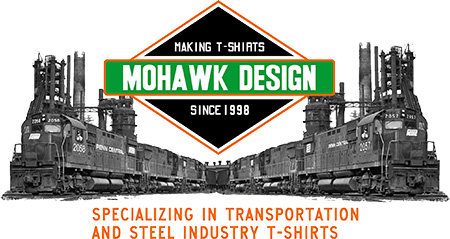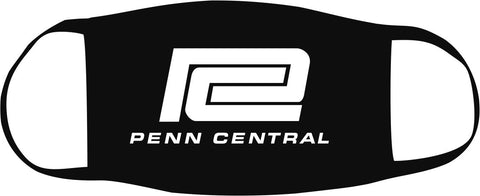Penn Central Transportation Company Hoodie
- Printed on Front
- 70/30 Blend
- Hood Color - PC Jade, PC Black
At 12:01 AM on February 1, 1968, the Penn Central began operation. The Penn Central was the largest corporation in the United States. It had over $5 billion in assets, 20,000 miles of track, 180,000 employees, and projected $17 billion in operating revenue for 1968---all on paper. To the public and to Wall Street, the Penn Central projected an image of modernity and stability. In reality, the merged Penn Central was little better off than its constituent railroads were before. On the first day of operation, the Penn Central only had $13.3 million of cash. Everything else they owned was on paper. The added burden imposed by the ICC of adding the bankrupt New York, New Haven and Hartford to the Penn Central made a bad situation worse. A decade of merger talks and agreements between the NYC and the PRR led to an implementation plan, but it was never carried out. Attempts to integrate operations, personnel and equipment were not very successful, due to sharply clashing corporate cultures, incompatible computer systems, and overly generous union contracts that loaded the PC with staff they did not need.[2]:233–234 All of the cost savings and reduction in expenses that was supposed to occur to a merged railroad never materialized with the Penn Central. The NYC had cultivated a corporate culture of openness where ideas were freely exchanged and managers did not operate in a top-down fashion. At the PRR there was a clearly defined hierarchy, management was slow to embrace new technologies and ideas, and lower level people deferred to those above them. The two corporate cultures were 180-degrees opposite each other. The merger technically was supposed to be two equals joined together, yet it was the PRR management team that ended up dominating the new Penn Central, which made the merger technically an acquisition of the NYC by the PRR. The NYC management team (the Green Team) was subordinated to the PRR management team (the Red Team). The merged Penn Central's corporate headquarters was in the former Pennsylvania Railroad head office at Six Penn Place in Philadelphia.
Track conditions deteriorated (some of these conditions were inherited from the three merged railroads) and trains had to be run at reduced speeds, resulting in delayed shipments and personnel working extensive overtime. As a result, operating costs soared. Derailments and wrecks became frequent, particularly in the Midwest.[3] Operation of the merged railroad became frustrating and difficult. Trains could not be routed properly because the separate NYC and PRR computerized routing systems could not communicate with each other and were incompatible. Trains began rolling but cars were often routed to the wrong destination, or dispatchers could not easily locate cars once they were sent out into the system. PC's poor shipment of Maine's potatoes resulted in many rotting before they could get to market. In the winter of 1969, most of Maine's potato harvest froze in PC's Selkirk Yard after being transferred from the Bangor & Aroostook Railroad but the computer system could not locate the cars. Unable to collect damages from the bankrupt PC, many Maine potato farmers went out of business, while those who survived the loss of their crop ceased shipping potatoes by rail, ending a profitable market for Maine's railroads.[4]
Penn Central management created a holding company, the Penn Central Company, and tried to diversify the troubled firm into real estate, pipelines, trucking, and other non-railroad ventures. However, in a slow economy, these businesses performed little better than the railroad assets. In addition, these new subsidiaries diverted management attention away from the problems in the core railroad business. To make matters worse, management insisted on paying dividends to shareholders to create the illusion of success. The Pennsylvania Railroad had a gold-plated reputation on Wall Street since it had the longest record of dividend payment in American corporate history. It was this stellar reputation on Wall Street that permitted the PC to borrow money easily and cheaply. The company had to borrow enormous sums to keep operating. The interest on the loans became an unbearable financial burden, but this fact was kept hidden from shareholders and the general public.







